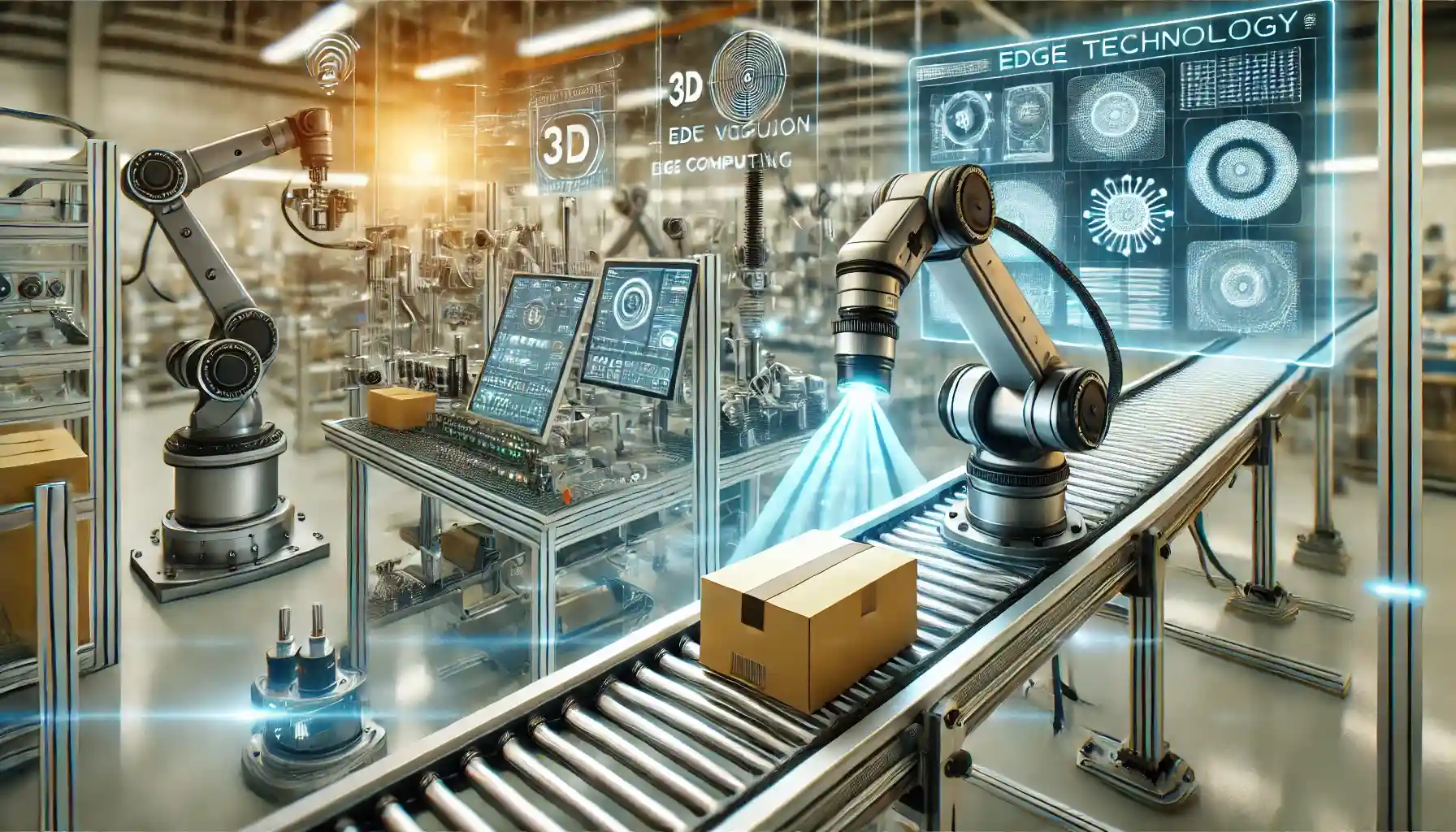
In the modern manufacturing landscape, achieving high efficiency and maintaining stringent quality standards are critical for competitiveness. One technology that stands out in driving these goals is the machine vision system. These systems employ advanced imaging and processing capabilities for tasks such as object detection and defect detection, playing a pivotal role in product counting and quality control. This article explores the latest innovations in machine vision systems and their impact on manufacturing processes.
What are Machine Vision Systems?
A machine vision system is an integration of cameras, sensors, lighting, and software designed to capture and analyze visual information. Unlike human vision, machine vision can process this information at high speeds and with exceptional accuracy. This technology is used across various industries to automate inspection tasks, ensuring products meet quality standards and production processes are optimized.
Innovations in Machine Vision Systems
High-Resolution Imaging: Recent advancements in camera technology have led to the development of high-resolution imaging systems. These cameras can capture minute details with exceptional clarity, which is crucial for accurate object detection and defect detection. High-resolution imaging ensures that even the smallest defects are identified and counted accurately.
Artificial Intelligence and Machine Learning: Integrating artificial intelligence (AI) and machine learning (ML) with machine vision systems has revolutionized the capabilities of these systems. AI algorithms can learn from past data to improve the accuracy of object detection and defect detection over time. This continuous learning process allows machine vision systems to adapt to new types of defects and variations in product features, ensuring consistent quality control.
3D Vision Systems: Traditional machine vision systems relied on 2D imaging, which had limitations in depth perception and inspection of complex geometries. The advent of 3D vision systems has overcome these limitations. 3D vision systems provide a more comprehensive view of products, enabling accurate measurements and inspections of intricate parts. This innovation is particularly beneficial in industries such as automotive and electronics, where precision is paramount.
Edge Computing: Edge computing involves processing data close to the source rather than relying on centralized cloud servers. For machine vision systems, this means faster processing times and reduced latency. Edge computing enables real-time object detection and defect detection, allowing immediate corrective actions on the production line. This capability enhances the overall efficiency and responsiveness of the manufacturing process.
Advanced Lighting Techniques: Lighting plays a crucial role in machine vision. Recent innovations in lighting techniques, such as structured light, multi-spectrum illumination, and adaptive lighting, have significantly improved the accuracy of inspections. These advanced lighting techniques enhance the contrast and visibility of features, making it easier to detect defects and count products accurately.
Benefits of Machine Vision Systems in Product Counting
Speed and Efficiency: Machine vision systems can count products at high speeds, far exceeding the capabilities of manual counting methods. This speed is crucial in high-volume manufacturing environments, where maintaining high throughput is essential. Automated counting reduces bottlenecks and ensures a smooth flow of products through the production line.
Precision and Accuracy: High-resolution imaging and advanced algorithms enable machine vision systems to count products with exceptional precision. This accuracy minimizes errors that could lead to inventory discrepancies and ensures that the correct number of products is packaged and shipped.
Consistency: Machine vision systems provide consistent performance without the fatigue and variability associated with human operators. This consistency ensures reliable counting results, which is vital for maintaining inventory accuracy and meeting production targets.
Automation Integration: Machine vision systems can be seamlessly integrated with other automated systems, such as conveyors and robotic arms. This integration allows for fully automated counting processes, reducing the need for manual intervention and freeing up personnel for more strategic tasks.
Versatility: Machine vision systems can be configured to count a wide range of products, regardless of their size, shape, or color. This versatility makes them suitable for various industries, from pharmaceuticals to food and beverage.
Benefits of Machine Vision Systems in Quality Control
Accurate Defect Detection: Machine vision systems can detect a wide range of defects, including surface imperfections, dimensional inaccuracies, and structural flaws. High-resolution cameras and sophisticated algorithms ensure that even the smallest defects are identified, maintaining high product quality.
Real-Time Inspection: One of the significant advantages of machine vision systems is their ability to perform real-time inspections. As products move along the production line, machine vision systems continuously monitor for defects, providing immediate feedback and allowing for quick corrective actions. This capability helps prevent defective products from advancing further in the production process, reducing waste and rework.
Comprehensive Coverage: Machine vision systems can inspect products from multiple angles and under various lighting conditions, offering comprehensive coverage that traditional inspection methods cannot match. This all-encompassing approach ensures that defects are detected no matter where they are located or how subtle they may be.
Reduction of False Positives: Traditional defect detection methods can sometimes generate false positives, leading to unnecessary rework or scrap. Machine vision systems use advanced algorithms to minimize false positives, ensuring that only genuine defects are flagged for further inspection or correction. This reduces unnecessary costs and improves overall efficiency.
Data Collection and Analysis: Machine vision systems generate valuable data during inspections. This data can be analyzed to gain insights into the production process, identify trends, and predict potential issues before they arise. Manufacturers can use this information to optimize production parameters, improve processes, and achieve continuous improvement in quality control.
Future Trends in Machine Vision Technology
AI and Deep Learning Integration: AI and deep learning are becoming increasingly integral to machine vision systems. These technologies enhance the system’s ability to learn from data, improving the accuracy and adaptability of object detection and defect detection. As AI algorithms become more sophisticated, machine vision systems will be able to handle more complex tasks with greater efficiency.
Augmented Reality (AR) and Virtual Reality (VR): AR and VR technologies are being explored to enhance the capabilities of machine vision systems. These technologies can provide operators with augmented views of the production line, highlighting defects and anomalies in real-time. This integration can improve the accuracy and speed of inspections, leading to better quality control.
Collaborative Robots (Cobots): Cobots equipped with machine vision systems are becoming more prevalent in manufacturing environments. These robots can work alongside human operators, combining the strengths of both to enhance production efficiency and flexibility. Cobots can handle repetitive tasks, such as product counting and inspection, allowing human workers to focus on more complex and strategic activities.
Edge AI: Edge AI combines edge computing with AI capabilities, enabling machine vision systems to process data and make decisions at the edge of the network. This approach reduces latency and allows for real-time object detection and defect detection. Edge AI can improve the efficiency and responsiveness of manufacturing processes, leading to better quality control and higher production yields.
IoT Integration: The Internet of Things (IoT) is transforming manufacturing by connecting machines, sensors, and systems to create a network of smart devices. Machine vision systems integrated with IoT can provide real-time data on the production process, enabling manufacturers to monitor performance, optimize operations, and predict maintenance needs. This integration enhances overall efficiency and helps maintain high-quality standards.
The continuous advancements in machine vision systems are revolutionizing manufacturing processes, particularly in areas such as product counting and quality control. By leveraging high-resolution imaging, AI, 3D vision, edge computing, and advanced lighting techniques, machine vision systems offer unparalleled accuracy, speed, and consistency. These innovations are driving efficiency gains, reducing costs, and ensuring that only the highest quality products reach the market.
Read more on WCCO






